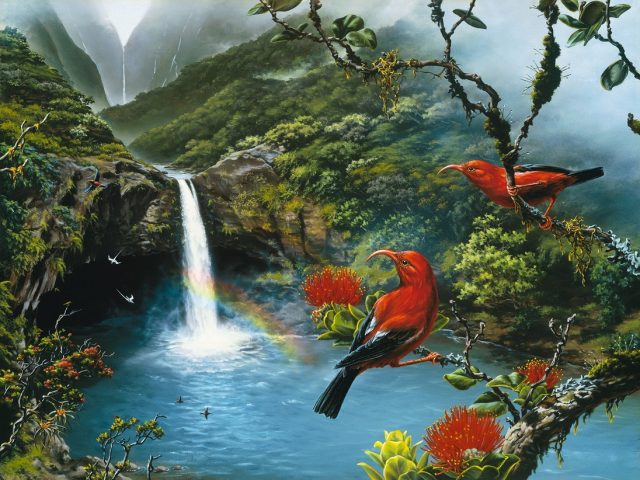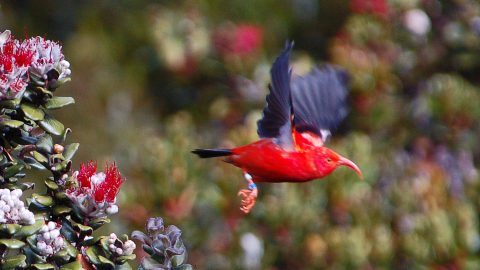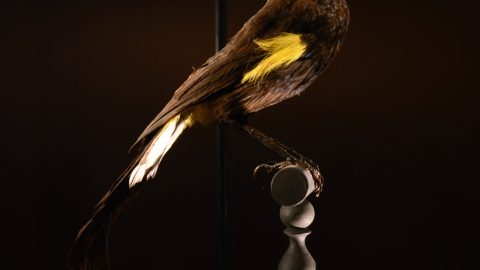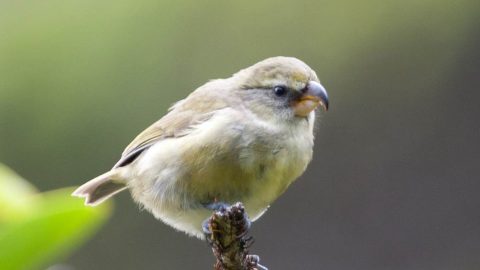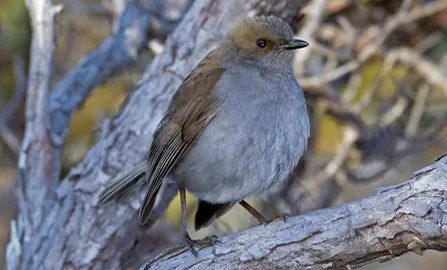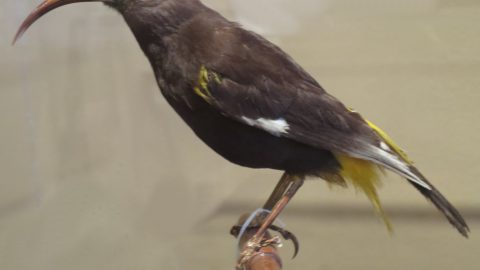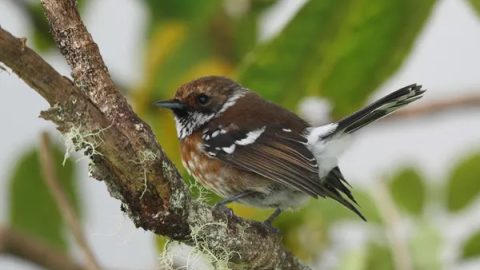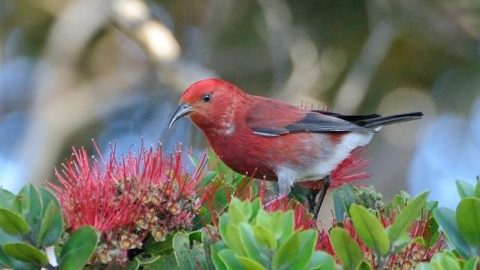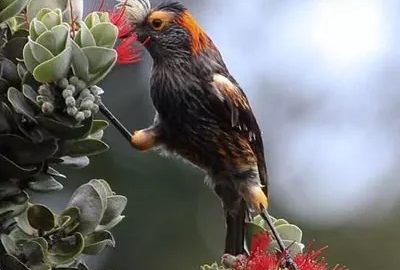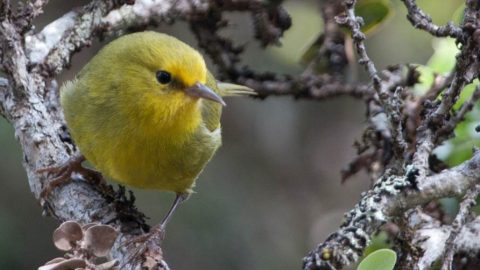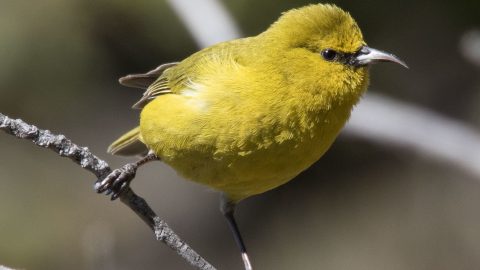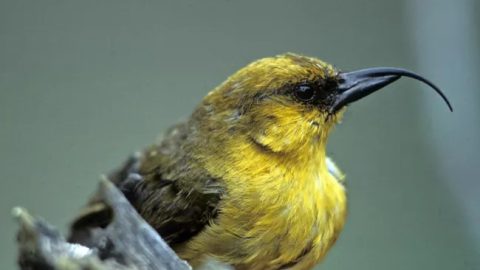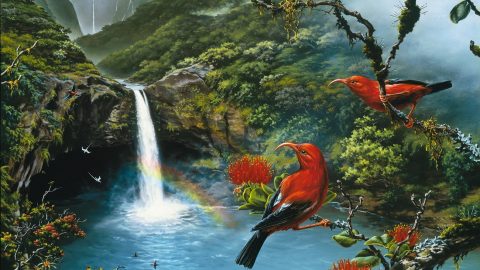This post was inspired by a Facebook post by Peter T Young. I’ve added facts using AI and included citations. I just didn’t want you to think I’m a bird expert. All I do is chant their names on occasion while walking in the forest.
“When the birds disappear, so do their Hawaiian names. This means that as bird sounds are silenced, the chants that transmitted their names and associated stories also disappear.” (Sault)
https://ojs.ethnobiology.org/index.php/ebl/article/view/1730/875
Forest Birds of Hawaii
Around six million years ago, a small ancient species of finch found its way to the most remote archipelago in the world. Over 2,000 miles from the nearest major land source, and uninhabited by humans or any other mammals, the small islands of Hawaii were a blank canvas just waiting to be filled with a brand new family of birds – the Hawaiian Honeycreepers. (FWS)
For millions of years, the birds thrived on the tiny islands in the Pacific. There were no mammals, no humans, few other species to compete with, and a great diversity of habitats. The first Honeycreepers arrived on ancient islands that have since eroded away.
As each new island in the chain rose from the sea and cooled the tiny birds colonized it, splitting off into dozens of new subspecies along the way. Each split in the family tree yielded more complexity and novel ways to find food, attract a mate, and fill an ecological niche. (FWS)
Unfortunately, all of this diversity can also be a limitation if the habitat or the environment changes. “A lot of the very specialized birds that had the most unique characteristics were the first to go extinct once the habitat started changing,” said Steve Kendall, Wildlife Biologist for Hakalau Forest National Wildlife Refuge. (FWS)
In the early 1800s naturalists describe flocks of ‘i‘iwi flying up and down the mountain slopes of the Hawaiian Islands foraging on nectar and insects. Their long curved bill matches the size and shape of the flowers of the lobeliad family.
Lobeliads were once found all over the islands, but like so many of Hawaii’s native species, those plants have become scarce. To survive, the ‘i’iwi has had to turn to another iconic Hawaiian species for their survival – the ʻōhiʻa lehua. (FWS)
But habitat change was not their only threat.
“The beautiful red birds, iiwi and akakani (apapani), and the birds of glorious yellow feathers, the oo and the mamo, were a joy to both eye and ear and found high places in Hawaiian legend and story, and all gave their most beautiful feathers for the cloaks and helmets of the chiefs.” (Westerfelt)
When Cook anchored off Waimea, Kauai, in 1778, he and his officers at once noticed the feather robes and helmets. The account is as follows:
“Amongst the articles which they brought to barter this day (January 21, 1778) we could not help taking notice of a particular sort of cloak and cap, which, even in countries where dress is more particularly attended to, might be reckoned elegant.”
“The first are nearly of the size and shape of the short cloaks worn by the women in England, and by the men of Spain, reaching to the middle of the back and tied loosely before.”
“The ground of them is a net-work, upon which the most beautiful red and yellow feathers are so closely fixed, that the surface might be compared to the thickest and richest velvet, which they resemble, both as to feel and glossy appearance.”
“The manner of varying the mixture is very different, some having triangular spaces of red and yellow alternately; others a kind of crescent, and some that were entirely red, had a yellow border which made them appear, at some distance, exactly like a scarlet cloak edged with gold lace.”
“The brilliant colours of the feathers, in those that happened to be new, added not a little to their fine appearance, and we found that they were in high estimation with their owners, for they would not, at first part with one of them for anything we offered, asking no less a price than a musket.”
“However some were afterward purchased for very large nails. Some of them as were of the best sort, were scarce, and it would seem that they are only used on the occasion of some particular ceremony or diversion, for the people who had them always made some gesticulations which we had seen used before by those who sung.”
“We were at a loss to guess from whence they could get such a quantity of these beautiful feathers; but were soon informed as to one sort for they afterward brought great numbers of skins of small red birds (i‘iwi) for sale, which were often tied up in bunches of twenty or more, or had a small wooden skewer run through their nostrils.” (Cook, 1778; Brigham)
“‘Kamehameha I is said to have reproved his bird-catchers for taking the life of the birds. “The feathers belong to me, but the birds themselves belong to my heirs,” said the considerate monarch.’” (Emerson, Perez) However, “[i]t is believed that most birds were killed after being plucked”. (Perez)
“[I]t is believed that native Hawaiian avifauna was affected by several interdependent factors … the extensively documented bird overkill by humans must have played a crucial role in their decline. … Numerous historical sources leave little doubt about the fate of most birds, regardless of the original reason for hunting them.” (Perez)
“Overhunting did not help many other bird species, which ended up adorning the garments of the Hawaiian nobility, or filling the bellies of the common people. Most birds victimized by Hawaiians are now either extinct or endangered; many are simply unknown to us, and their names have faded from Hawaiian memory.” (Perez)
In the modern age, ‘scientific collectors’ further decimated the Hawaiian forest birds. “The tragedy for many Hawaiian birds was that they were not only distinctive, desirable and rare – a dangerous combination in the best of circumstances – but also often heartbreakingly easy to take.” (Brown)
“The greater koa finch, an innocuous member of the honeycreeper family, lurked shyly in the canopies of koa trees, but if someone imitated its song it would abandon its cover at once and fly down in a show of welcome.”
“The last of the species vanished in 1896, killed by Rothschild’s ace collector Harry Palmer, five years after the disappearance of its cousin the lesser koa finch, a bird so sublimely rare that only one has ever been seen: the one shot for [Baron Lionel Walter] Rothschild’s collection.” (Brown)
Since 1800, five bird species have become extinct in North America; two additional species are presumed extinct and two sub-species have disappeared. Overall, bird extinctions in North America are a rare event.
In contrast, in Hawaii, a minimum of 31 bird species have become extinct since 1800 including 10 in the last 50 years. Further, 14 of 24 endemic forest birds are endangered. (NFWF)
“Rothschild was by no means alone in his zeal to capture birds at more or less any cost. Others in fact were more ruthless. In 1907, when a well-known collector named Alanson Bryan realized that he had shot the last three specimens of black mamos, a species of forest bird that had only been discovered the previous decade, he noted that the news filled him with ‘joy.’” (Brown)
© 2023 Ho‘okuleana LLC
Citations
-
- The information about the Hawaiian Honeycreepers and their evolution appears to be based on the article “Hawaiian Honeycreepers: The Evolutionary Biology of an Adaptive Radiation” by Peter R. Grant and B. Rosemary Grant, published in Biological Journal of the Linnean Society in 1980. (https://academic.oup.com/biolinnean/article/14/4/347/2638720)
-
- The quote about the extinction of specialized birds due to habitat change and the reference to Steve Kendall, Wildlife Biologist for Hakalau Forest National Wildlife Refuge, appears to be from the article “Song of Extinction” by Daniel A. Brown, published in the Atlantic in 2001. (https://www.theatlantic.com/magazine/archive/2001/05/song-of-extinction/302192/)
-
- The description of the birds of Hawaii observed by Cook and his officers in 1778, as well as the subsequent hunting of birds for their feathers, appears to be from the book “Hawaiian Mythology” by Martha Warren Beckwith, published in 1940. (https://books.google.com/books?id=0otRAAAAMAAJ)
-
- The quote about Kamehameha I reproving his bird-catchers and the statement that most birds were killed after being plucked appears to be from the book “Birds of Hawaii: New and Selected Poems” by Juliet S. Kono, published in 2011. (https://books.google.com/books?id=TkG4jK4J9msC)
-
- The information about the impact of human overhunting on the native Hawaiian avifauna appears to be from the article “Prehistoric overkill, the taro-mahiole nexus, and the extinction of the Hawaiian flightless ibis” by Helen F. James and Storrs L. Olson, published in the Proceedings of the National Academy of Sciences of the United States of America in 1991. (https://www.pnas.org/content/88/14/5837)
-
- The information about the modern impact of scientific collectors on Hawaiian forest birds appears to be from the article “Song of Extinction” by Daniel A. Brown, published in the Atlantic in 2001. (https://www.theatlantic.com/magazine/archive/2001/05/song-of-extinction/302192/)
-
- The statistics about bird extinctions in North America and Hawaii appear to be from the website of the National Fish and Wildlife Foundation. (https://www.nfwf.org/our-work/regions/hawaii-pacific/bird-conservation-hawaii)
